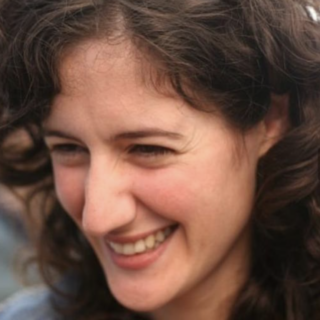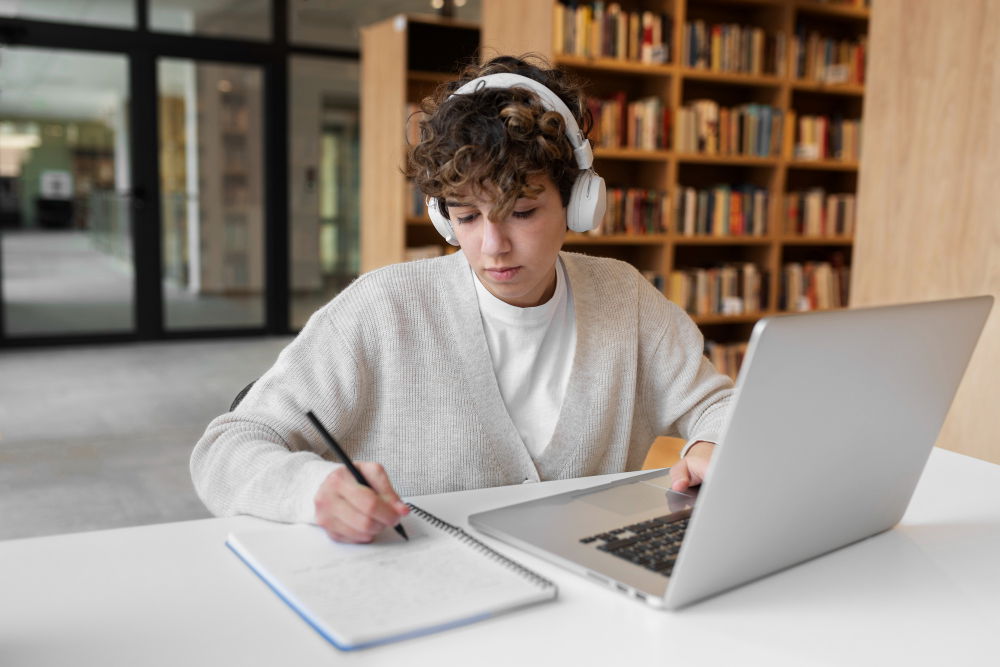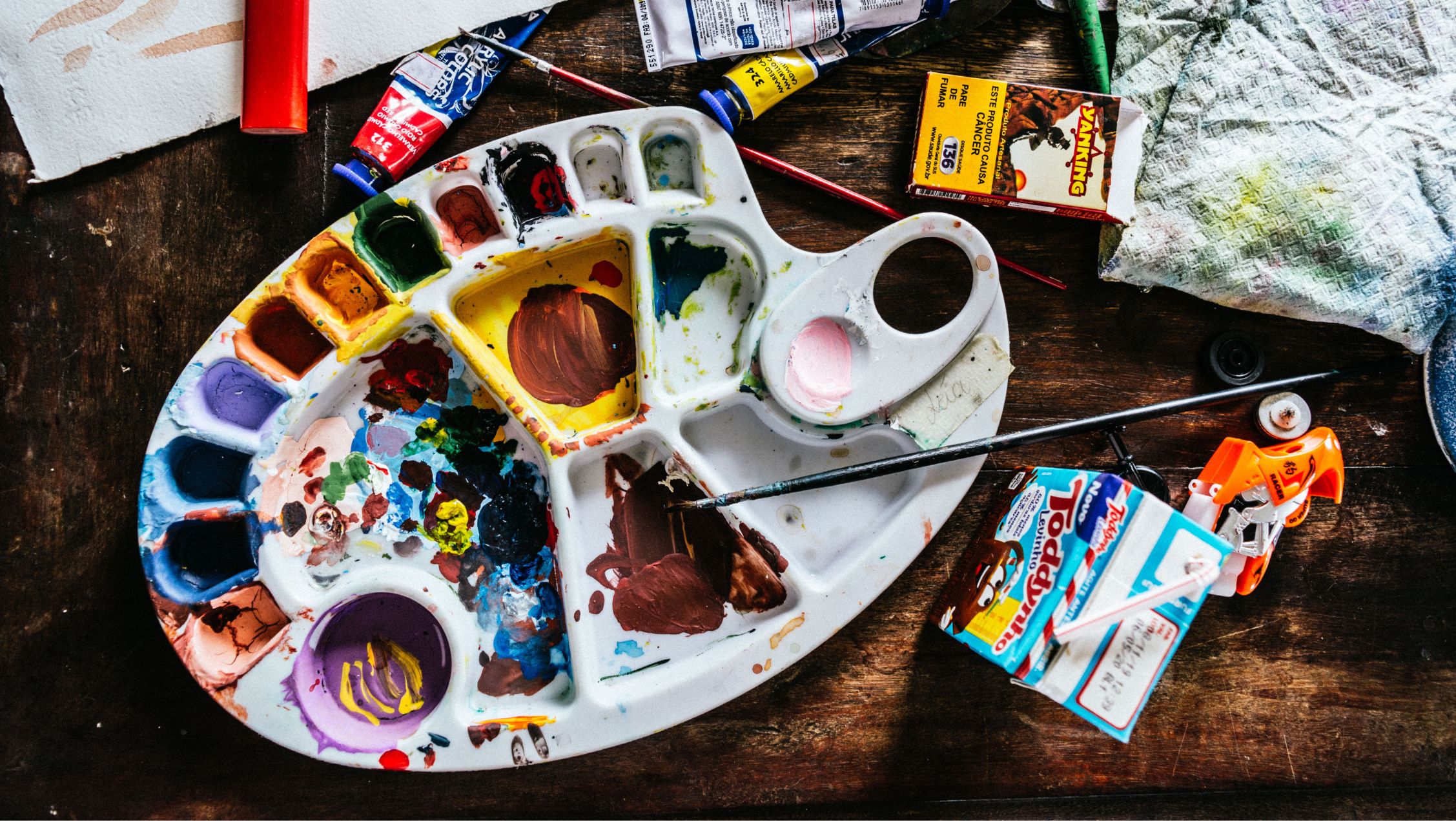IB Visual Arts Extended Essay: Guide to Your Success

Coral is an experienced high school Visual Arts teacher and art curator. She holds a BA in Visual Arts and Psychology and a Master of Education in Neuropsychology and Education. As an IB Examiner, she guides students to bring the best out of their Process Portfolio, Exhibition, and Comparative Study. She equally lends her expertise to supporting students to excel in their IB Visual Arts Extended Essay. Coral’s enthusiasm for Art and what it offers to the individual and the world is contagious! You can read her full profile here.
Article reviewed and updated by Coral, 22nd July, 2025.
Need help with IB Visual Arts EE?
The IB Visual Arts Extended Essay is your chance to explore a topic you care about in art. It’s a chance to investigate something meaningful, analyse artworks thoughtfully, and express your ideas clearly. Starting your IB Visual Arts EE can feel overwhelming, with so much to consider from choosing a topic and shaping a research question to analysing artworks and following the required structure.
In this guide written with Coral’s expert advice, you’ll find everything you need to approach your EE with clarity: from understanding the format and criteria to using visuals effectively and avoiding common mistakes. Please note that the information in the guide is relevant for Extended Essays for assessment in May and November 2026 and will be updated in January to align with the new syllabus.
Let’s get started so you can confidently plan, write, and refine your essay!
What is the IB Visual Arts Extended Essay?
The IB Visual Arts Extended Essay is a 4,000-word academic study based on a clear research question within the visual arts. It requires visual analysis, evidence, and critical thinking, connecting personal interest with academic research while staying firmly rooted in the subject. A well-chosen topic allows you to explore meaningful ideas through the lens of art and visual culture.
IB Visual Arts Extended Essay: Structure
Understanding how your EE should be organised will make writing much easier. Here’s what you need to know.
Word count, format, and deadlines
The maximum word count for the Visual Arts EE is 4,000 words. This includes your introduction, analysis, and conclusion. It does not include visuals, captions, references, or your RPPF (Reflection on Planning and Progress Form).
The essay should follow a formal format:
- Use a readable font, such as Times New Roman, size 12
- Double spacing is required
- Include page numbers
- Avoid including your name or school
- File size must be under 10 MB
Your school will set internal deadlines for different stages of the EE. Make sure you meet these. Missing deadlines can limit the support your supervisor can give you.
Research question and its central role
Your research question is the backbone of your essay. It should be clear, focused, analytical, and directly linked to visual arts. Avoid broad or descriptive questions.
Begin with a topic that interests you, then narrow it to something manageable within 4,000 words. For example, instead of asking, “What is postmodernism?” ask, “How does Barbara Kruger’s use of text challenge traditional ideas of art and authority?”
Coral suggests:
“If you’re struggling to come up with a question, try exploring the impact or intention behind the visual choices artists make. This approach usually allows for strong critical thinking. Using the same research question as an example, the intention would be “to challenge traditional ideas of art and authority” and the visual choice would be the use of text.”
Recommended essay structure (intro, body, visuals, conclusion)
Here’s a structure that works well for most visual arts essays:
- Title Page: Include the title, research question, subject, and word count.
- Table of Contents: List the main sections of your essay.
- Introduction (around 200–300 words): Present your research question, explain why it matters, and outline your approach.
- Main Body: Develop your argument in organised sections. Use subheadings to help with clarity.
- Visuals: Place images next to the parts of the essay they relate to.
- Conclusion (200–300 words): Summarise your key findings. Make sure you answer the research question.
- References and Bibliography: Use MLA or Chicago consistently.
- Appendices (optional): Only include if something is essential to the essay and not part of the word count.
This structure helps you build a logical flow and keeps everything focused.
Integrating Visuals in Your Essay
Since this is a visual arts essay, using images is essential. But just adding pictures without context or analysis won’t help your score. Let’s go through how to use them properly.
How and when to include images
Use images to support your analysis, not just decorate the essay. Include them when referencing specific artworks, highlighting visual elements, or comparing styles. Place each image close to the related paragraph so it’s easy for the reader to follow your discussion. Only include images that directly serve your argument.
Image captions, referencing, and formatting
Each image must be clearly labelled and properly sourced. Captions should give enough context, like this:
Figure 1: Claude Monet, Impression, Sunrise (1872), oil on canvas, Musée Marmottan Monet, Paris.
List all image sources in your bibliography, including those from books or museum websites. Use a consistent citation style, either MLA or Chicago.
Coral insists that, “It saves a lot of time (and stress!) to get into the habit of citing images as you go, rather than leaving it for the end and having to reverse image search.”
Using visuals analytically (not just as illustrations)
This is where many students lose marks. Don’t treat visuals as decorations. They should serve your argument. Here’s what that means:
- Refer directly to the image in your text (e.g. “As seen in Figure 3…”)
- Explain what the image shows and why it’s relevant
- Analyse visual elements like colour, line, composition, and symbolism
Let the image become part of your reasoning, not just a break in the text. The goal is to show how visual evidence supports your ideas.
IB Visual Arts EE Assessment Criteria Explained (A–E)
Your essay will be marked out of 34 points, across five criteria. Let’s go through what each one means and how to do well.
Criterion A: Focus and Method
This is about your research question and how you go about answering it. Your question must be clearly stated, focused, and related to visual arts to do well here. You should also show that you’ve chosen suitable sources and a good method for exploring your question. To succeed:
- Keep your question narrow enough to explore in depth
- Explain how and why you selected your materials
- Choose artworks and sources that are rich enough for analysis
Coral emphasises that you must explain why your topic is worth exploring. For example, how it offers a new perspective or helps us better understand a specific aspect of visual arts.
“A common way to lose marks in this criterion is by having a question that’s almost about visual arts but actually leans more into history or a different subject. Make sure your focus stays rooted in the art itself. If your essay could work without the images, you might need to adjust your method or your research question.”
Criterion B: Knowledge and Understanding
This looks at how well you understand your topic, the artworks, and the broader context. It also checks your use of visual arts vocabulary. To do well:
- Use key terms accurately (e.g. composition, negative space, abstraction)
- Show awareness of cultural or historical influences
- Explain the background of the artist or movement when relevant
Coral suggests that, “When you bring in historical or cultural background, make sure it connects directly to the artwork and/or your research question. Context should deepen your analysis, not distract from it.”
Aim for clarity and depth. Don’t just say something is “interesting”. Explain why and how.
Criterion C: Critical Thinking
This is the most important criterion. It covers your ability to analyse, interpret, compare, and evaluate. To work on this:
- Build a clear and logical argument
Coral insists you should “make sure each paragraph ultimately relates to your research question, so everything you choose to include in your EE contributes meaningfully to answering it.”
- Analyse, don’t just describe
- Compare artworks where relevant
- Support your points with evidence from both visuals and sources
Coral explains:
“For instance, if you argue that Kara Walker’s use of silhouettes evokes historical trauma, don’t limit yourself to just stating it. Instead, include specific artworks and within them, analyse precise visual elements (like exaggerated gestures or stark contrasts). Then back it up with a quote from a critic and/or (ideally!) from Walker herself. Using both what you see and what others have said strengthens your interpretation and shows you’re grounding your ideas in solid evidence.”
Be careful not to over-rely on quotes. The essay is about your thinking, not someone else’s.
Criterion D: Presentation
This is all about formatting, structure, and clarity. A well-organised essay that follows IB requirements will do well here. Here are some tips:
- Use subheadings to structure your essay
- Include page numbers and a table of contents
- Follow formatting rules (font, spacing, file size)
- Use correct and consistent citation
Make sure your essay looks polished. First impressions count.
Criterion E: Engagement and Reflections (RPPF tips)
This criterion is based on your RPPF, a 500-word form where you reflect on the research and writing process. It includes three entries:
- Initial ideas and topic exploration
- Progress and changes during the research
- Final reflections after submission
Coral suggests considering reflecting on what you would do differently if you were to do the research again.
Here’s how to make the most of your RPPF:
- Be honest about what you found difficult and how you worked through it
- Mention key decisions or turning points in your process
- Show personal growth and intellectual curiosity
Coral warns, “Avoid simply summarising your work. Instead, explain problem-solving moments, like why you shifted your research question or how you found new sources.”
These reflections don’t count toward your essay’s word limit, but they can make a big difference in your final score.
How to Choose a Strong IB Visual Arts EE Topic
Choosing the right topic is key. A strong one makes writing easier and more engaging, while a weak one can leave you stuck. Here’s how to get it right from the start.
Sources of inspiration: artists, movements, techniques
There are lots of ways to find inspiration for your topic. What matters most is choosing something you’re genuinely curious about that connects to visual arts.
Below are a few ideas to help you start brainstorming:
- Artists whose work you admire or find challenging
- Art movements that changed the way we think about art
- Social, cultural, or political themes in visual culture
- Symbolism or technique in a specific set of artworks
- The use of materials or media in contemporary art
Once you’ve got a general idea, narrow it down until it’s focused enough to explore in depth.
From her experience, Coral has two pieces of advice in particular. Firstly it is important to avoid “double-dipping”. You shouldn’t use the same artists or artworks from your Comparative Study in your Extended Essay.
Secondly, unless you’re truly passionate about a well-known artist, she usually recommends avoiding the biggest names, like Picasso or Van Gogh.
“They have been written about so extensively that it’s difficult to offer a fresh perspective, and examiners have likely seen similar essays many times. Instead, look for artists or movements that are less mainstream but still have enough academic material available. Contemporary artists can be a great alternative choice, since you can usually find strong primary sources about them, like interviews, exhibition reviews, or artist statements.”
Checking for depth and research feasibility
A strong EE topic needs depth, not just broad interest. Before you commit, ask:
- Can I analyse at least two or three artworks?
- Are there reliable sources available?
- Does the topic let me explore technique, meaning, or context?
Avoid vague themes like “art and emotion.” Instead, go specific, like: How did Banksy’s early stencil works influence perceptions of street art in Bristol between 2000 and 2005? That gives you a clear and focused direction.
Finding primary vs. secondary sources
In a Visual Arts EE, use both primary and secondary sources. Primary sources include artworks, artist statements, interviews, catalogues, and your own observations. Secondary sources cover books, scholarly articles, documentaries, and critiques.
Coral suggests:
“If possible, try to choose a topic that gives you access to at least one firsthand source of the artist speaking about their own work, like an interview or an artist statement. It often makes your essay stronger by giving you solid insight into the artist’s purpose, rather than fully relying on what others say about their art.”
Focus on reliable sources like JSTOR, Artstor, museum websites, or artist interviews. Avoid overusing blogs or Wikipedia. Keep notes and track your sources to simplify citations later.
Choosing a focused, researchable topic that genuinely interests you is key to writing a strong and successful IB Visual Arts Extended Essay.
Writing Tips for a Creative and Analytical Visual Arts EE
Now let’s look at how to actually write your essay. It should reflect your voice but still follow academic expectations.
Balancing personal voice and academic tone
Your EE should sound formal but not robotic. It’s okay to show personal insight if it stays thoughtful and relevant. To strike the right balance:
- Avoid casual language or slang
- Use first person only when it adds to analysis
- Keep the tone reflective and respectful
For example: “I was struck by how Jenny Saville’s brushwork challenges traditional ideas of the female nude”
This shows engagement while supporting your argument.
Connecting theory and practice
Strong essays link visual analysis with ideas from the art world. This helps deepen your argument and shows academic understanding. Try these strategies:
- Use art theories like semiotics or feminism to frame your analysis
- Link artistic technique to meaning
- Compare your observations with expert perspectives
Coral explains that,
“Comparing your own observations with what experts or the artists themselves say can help you identify new angles or even contradictions. Make sure you engage with multiple viewpoints to show that you’re thinking critically and not just accepting one interpretation.”
Use recent interviews or reviews for contemporary artists, and scholarly texts for historical ones.
Citing sources correctly (MLA or Chicago)
Use either MLA or Chicago referencing consistently. Cite all sources, including books, articles, websites (with access dates), images, and interviews. Tools like Zotero or EasyBib can help, but always double-check citations yourself.
Strong writing in a Visual Arts EE comes from blending clear analysis, personal insight, and well-sourced research in a thoughtful and organised way.
Common Mistakes in IB Visual Arts EE: Know to Avoid
Even with a good plan, it’s easy to fall into a few traps. Here are some of the most common mistakes to avoid in IB Visual Arts Extended Essay.
Choosing a topic that is too broad or purely descriptive
Broad topics make it hard to build focused arguments. Avoid general themes like “the history of abstract art.” Choose a specific angle instead. Also, don’t just describe what you see. Explain why it matters and how it supports your research question.
Neglecting the RRS and RPPF
The Researcher’s Reflection Space (RRS) helps track your ideas, and the Reflections on Planning and Progress Form (RPPF) reflects on your progress. Many students skip or rush these, losing easy marks. Start early, take notes after meetings, and reflect honestly to write strong entries.
Using visuals without analysis
Images need to be part of your argument, not decoration. Always explain their relevance in your writing.
For example: In Figure 2, the layering of found materials in El Anatsui’s wall hanging reflects both the fragility and resilience of post-colonial identity.”
Failing to contextualise artworks historically or culturally
Consider when and where the artwork was made, what was happening then, and how the artist’s background influenced the work. This adds meaning and shows a deeper understanding.
Avoiding these common mistakes will help you stay focused, score higher, and produce a more thoughtful and well-rounded Visual Arts Extended Essay.
Meet IB’s Visual Arts Extended Essay High Standards with Our Tutors
The IB Visual Arts Extended Essay takes time, focus, and thoughtful planning at every stage. From developing a strong research question to analysing artworks and writing meaningful reflections, the process can be demanding without the right support.
That’s where TutorsPlus comes in. Our expert IB Visual Arts tutors offer tailored, one-on-one guidance to help you refine your topic, structure your essay, and confidently meet the assessment criteria.
Here’s an example of what one happy IB Visual Arts student had to say about Coral:
“Coral’s help with my Process Portfolio was precious! While my teacher’s feedback was vague, and I felt a bit lost, Coral guided me through every step to ensure that my Process Portfolio hit every top mark of the grading criteria. I really appreciated that she was also interested in my artwork and brought up some of its qualities that I hadn’t previously considered. I left our lessons with a way better understanding of what the IB expects from me, and feeling more confident about my art, which I didn’t expect and I highly appreciate it!”
If you’re looking for an IB Visual Arts tutor, contact us at and 022 731 8148. Explore top-level IB Visual Arts EE examples, learn what works, and build an essay you’re proud of.












